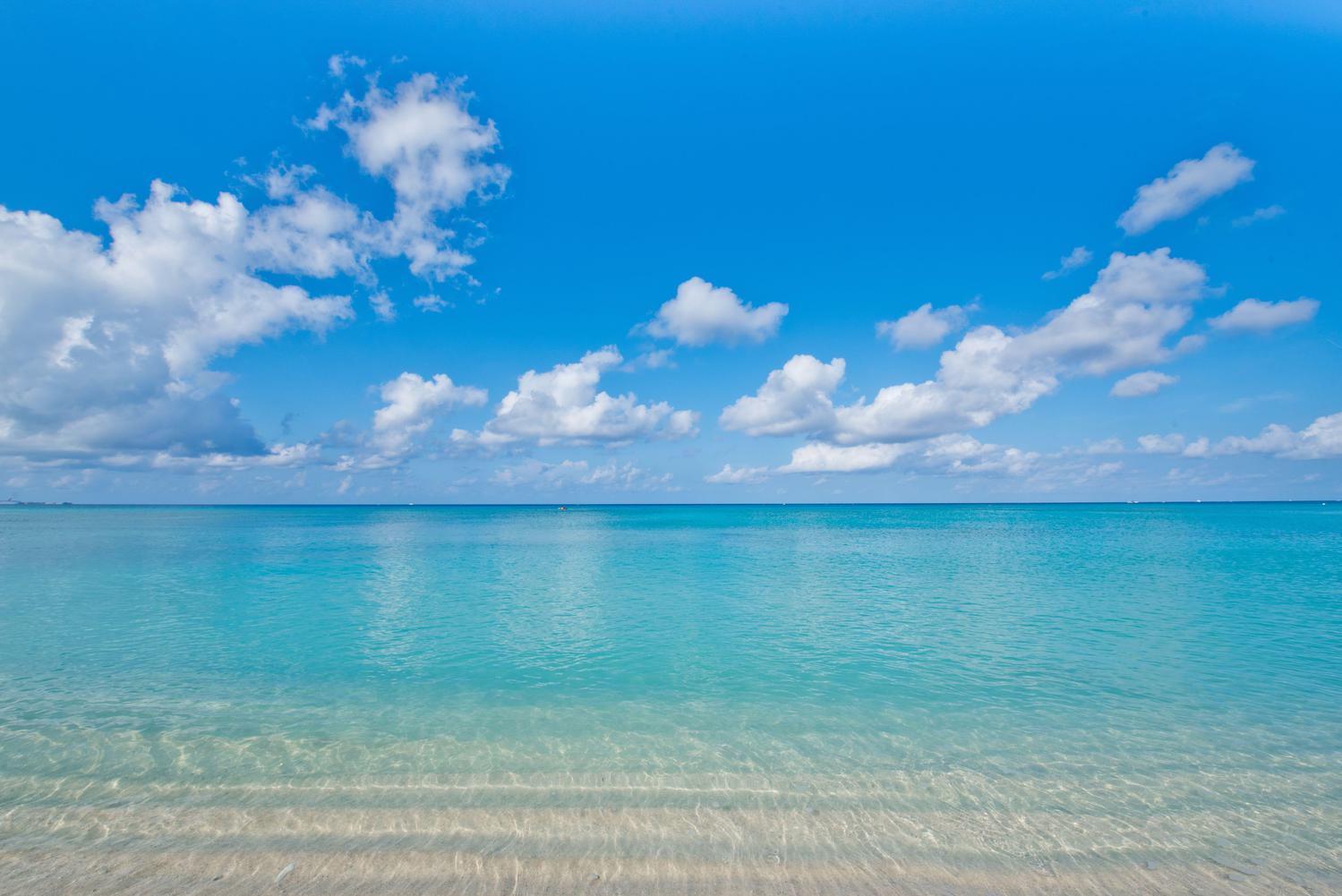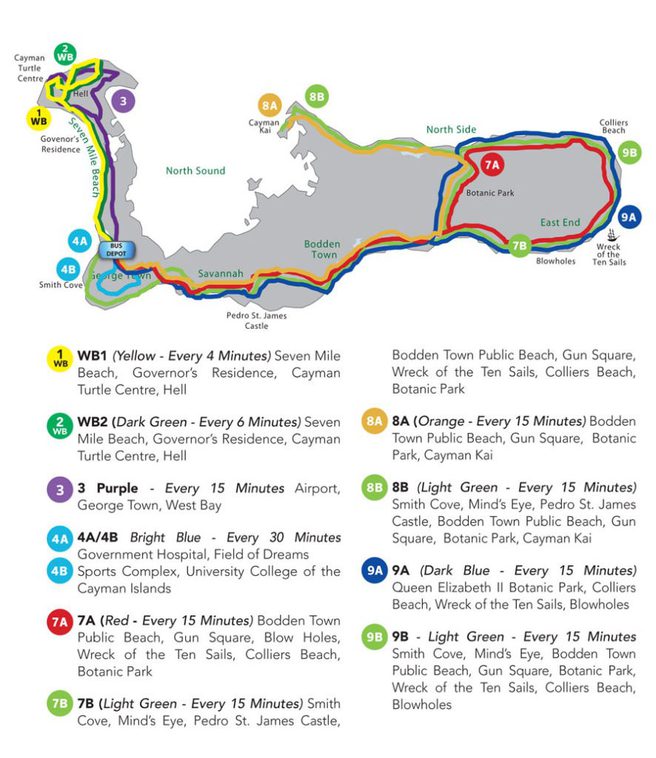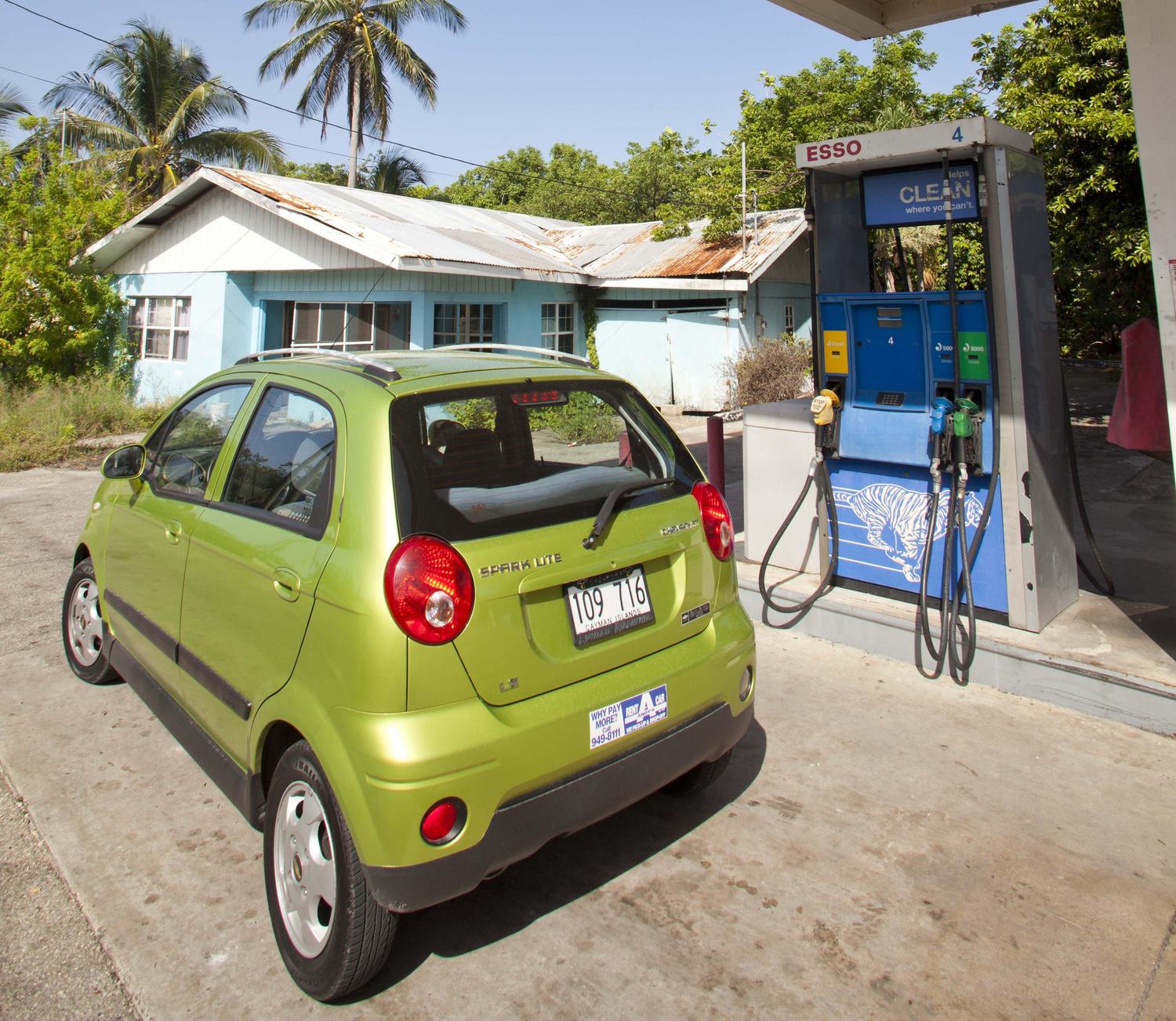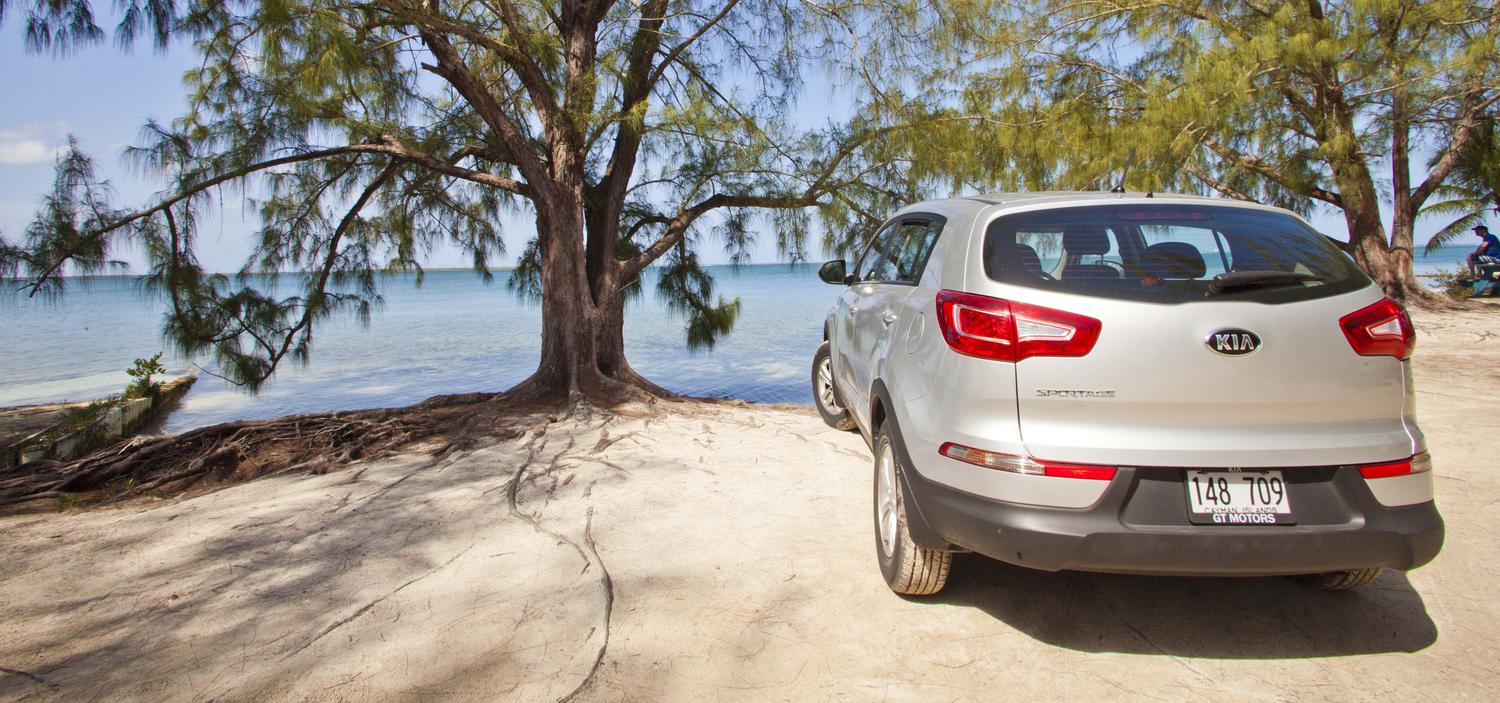Grand Cayman has a reasonably good public bus system that operates seven days a week.
Public Bus
There are currently nine bus routes and eight different coloured circles on the front and rear with a route number in the middle, with ‘Public Bus’ written along the side.
Be sure to check if the bus is en route to your destination before getting in. All routes run to and from the bus depot in central George Town, where there is a Public Transport Inspector on duty from 7am-7pm Monday-Friday (except for public holidays) to supervise all bus operations. There are 125 designated bus shelters and bus stops on the Island, but the best way to catch a bus is to simply wave one down from the side of the road. If you hear a bus beeping as you, it is the driver checking to see if you need to be picked up. Most buses carry between 14-29 passengers.
If you would like to call the supervisor in the bus terminal, the number is (345) 926 8814.
There is always a lot of fervent discussion when it comes to the volume of traffic on Cayman's roads and whether it is time for the Cayman Islands Government to implement a bus service during peak rush hour using large buses. A London double-decker Routemaster, for example, carries 80 passengers, including 25 standing downstairs, and it does about 6-10mpg, depending on the traffic. That is pretty efficient on passenger miles per gallon if full or close to it.
As of March 2025, no changes have been made to the current Cayman public bus system.
Bus Fares
The average fare is CI$2 per journey or CI$3.50 if you take a long trip like George Town to East End or North Side. Any journey that crosses the Frank Sound junction costs CI$3.50. Any journey that stops before the Frank Sound junction costs CI$2. Any journey that goes beyond Hutland Road, such as Rum Point and Cayman Kai, will cost CI$8. The best routes for buses are on the main roads around retail areas and non-residential areas. But there are also regular scheduled buses which run along South Church Street, South Sound Road, Walkers Road, Fairbanks Road and the Industrial Park, Owen Roberts Drive (airport area).
There have been reports and complaints that buses will go to Bodden Town and Frank Sound (from GT) on a regular basis but will often turn around and drive back to town rather than complete their route around to North Side and East End, especially if their bus is empty. This means that if you are relying on catching a bus in North Side and East End to take you to George Town, particularly in the afternoon, then you might need to find alternate transportation.
| Route | KYD | USD |
|---|---|---|
| George Town - West Bay | $2 | $2.50 |
| George Town - Bodden Town | $2 | $2.50 |
| George Town - East End | $3.50 | $4.37 |
| George Town - North Side | $3.50 | $4.37 |
| George Town - Cayman Kai | $8 | $10 |
| George Town - Walkers Road and Olympic Way | $2 | $2.50 |
Disabled Access
The public bus is a route based service and not a point to point direct service like a taxi. They will pull over safely on their designated route to collect passengers, and so that passengers can alight. The public bus service is also on a scheduled time. While they may be willing to assist with luggage on a one-off basis, it may not be practical for the bus driver to leave the bus to assist on every stop. They also may not have adequate space to accommodate the needs of disabled passengers properly, for example, those in a portable wheelchair, which would require being stowed for the duration of the journey. For an overall more relaxed and comfortable experience, it is strongly advised that disabled passengers call for a taxi, some of which have been additionally modified to accommodate the disabled.
Bus Depot Hours
Monday–Friday 5am–7pm
A limited, non-scheduled service operates on a Saturday & Sunday which isn't reliable enough for tourists if on a schedule, but residents with know-how could make use of it.
Bus Route Map
Public Bus Service Overhaul
In April 2023, Deloitte published a report on the Cayman Islands' public bus system, which was commissioned by the Ministry of Tourism and Transport. The report found that the current system is "fragmented, inefficient, and unsustainable," and that it is failing to meet the needs of the community.
Deloitte's recommendations include:
Scrapping the current private bus service and replacing it with a government-run public bus network. This would give the government greater control over the system and allow it to implement more efficient operations.
- Investing in new buses and infrastructure. This would improve the reliability and comfort of the service, and make it more attractive to riders.
- Larger buses with amenities like personal item space, WiFi, and accessibility features for disabled individuals
- Emphasis on natural light and maintaining a consistent standard of quality
- Creation of bus lanes and more official bus stops with WiFi
- Potential establishment of district depots with various amenities like shelter, surveillance, lighting, and security
- Advocacy for extended operational hours across all routes, including during less busy times
- Stress on drivers providing high levels of service
- Ensuring easy access for customers with physical disabilities
- Elimination of additional charges for personal belongings
- Deployment of customer service representatives at bus stops and depots
- Facilitation of online or advance payment options and Introducing a more integrated fare system. This would make it easier for riders to use the bus system and encourage them to transfer between buses.
- Ensuring reliability by adhering to predefined schedules
- Expanding the bus network to cover more areas. This would make the bus system more accessible to people living in all parts of the Cayman Islands.
Deloitte estimates that the cost of implementing these recommendations would be between $25 million and $30 million. However, the report argues that the benefits of a more efficient and sustainable public bus system would outweigh the costs.
The report also found that a public bus system would have a number of positive impacts on the Cayman Islands, including:
- Reduced traffic congestion and air pollution.
- Improved access to education and employment opportunities for low-income residents.
- Increased tourism revenue.
- Greater social inclusion.
The Cayman Islands government has not yet announced whether it will implement Deloitte's recommendations. However, the report has generated a lot of interest and debate in the community.
In a interview with the Cayman Compass, Tourism and Transport Minister Kenneth Bryan said that the government is "taking a serious look" at the report and that it is "committed to improving the public bus system."
As of March 2025, no changes have been made to the current Cayman public bus system.






